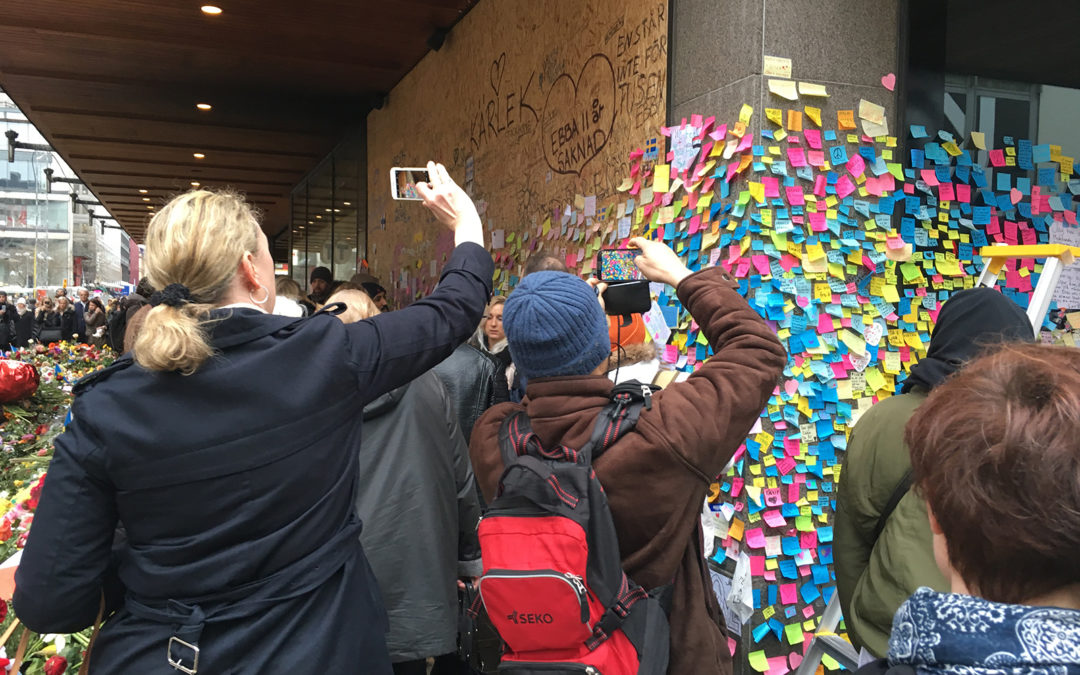November 23-24 the Collecting Social Photo project team is gathering in Helsinki to run an ideation workshop around collecting and disseminating social digital photography. We have invited external guests to join us, Ph.D. students and researchers as well as museum staff.
We will attempt to prototype initiatives and interfaces that will increase the value of social digital photography collections for archives and museums and for the end users.
To do this we will need to look at the research questions of the project:
Q1: How can data collection policies and practices be adapted to create relevant and accessible collections of social photography as cultural heritage in museums and archives?
Q2: How can digital archives, collection databases and interfaces be adapted to more accurately disseminate collections to different stakeholders and end users?
Q3: How can museums and archives change their role when collecting, in order to increase user influence in the production of the common cultural heritage?
We will have to consider the role and mission of the archive and museums in the project (and generally)
We will have to try to frame the social digital photograph, to understand its character:
1) NETWORKED: How is the social media photograph networked, and how does that movement affect archives/museums? How does the ecosystem of services like Facebook, Snapchat etc affect the movement of the photograph? How do groups of social media users frame the use of photography in social media? What role does the archive/museum play in this network?
2) ASSEMBLAGE: The social digital photograph is an assemblage. But of what? Is its an assemblage of text + image + geodata + metadata + ?. And is the social media photograph still an object in traditional terms within the archival collections?
3) METADATA: The social digital photograph has metadata that we need to consider (place, time, etc.). At the same time, metadata can be difficult as social media platforms such as Instagram strip all metadata out of an image when it is uploaded. How do we capture the different timestamps of a photograph, when it was taken, when it was posted, when it was shared etc.?
4) COMMUNICATION: Can we capture and display/visualize conversation with photographs?
5) PRIVATE VS PUBLIC: Social digital photography can be completely private, be public or even become public domain (as a meme): How does the short span between capture and archive/dissemination affect privacy?
6) THE LARGE NUMBER OF PHOTOS: Often of importance as a large mass, exists in large numbers. There is already a problem within archives/museums of documenting unique photographs, as there aren’t enough staff to add metadata at this level. How do we deal with thousands of new photos?
7) ALIVE: The social digital photograph is also in a sense a living object. Can museums/archives preserve that? Or can we only preserve an instance of the photo (caught in time/space/situation)?
8) A SOCIAL AGENT: Social digital photography can create stronger connections between people, museums, and collections. How can social photography be used to inspire creativity? And how can social photography fit into the emerging role of museums within social justice and activism?
9) COPYRIGHTED: Photography is protected under copyright. It can be licensed. How do we deal with ownership and copyright issues over content and comments posted?
10) PERSONAL: The social digital photograph is personal and sometimes private data, not meant to be shared with a larger audience. How do we adress moral rights? What can ethically be collected and how? How can we treat this personal data in a public museum context? What about issues like surveillance?
During the workshop we will look at specific situations where we anticipate using social digital photography, both collecting and disseminating. We are now looking at topics, target groups, technology and context to frame the ideation. The tasks that will be given to the participants will be highly concrete and relevant to contemporary archival and museum practice, but with a strong focus on future challenges and possibilities.
Framing the workshop
1) TOPICS: What topics would be interesting and relevant? Climate change, democracy, information bubbles, digital identities and footprints, migration, gender or economic inequality, racism, identity and teens, growing up today?
2) TARGET GROUPS: Which target groups do we want to work with during the workshop? Kids and families? Teens/youth? People with disabilities? Multicultural communities? Minority communities? Elderly people? Other groups?
3) TECHNOLOGY: In what way can we use digital technology to collect and/or disseminate social digital photography? Cloud services like Google Cloud Data Lab? Is AI relevant? AR/VR? Touch tables? How would we use API:s? Mobile? IoT/wearables? Big data and visualizations? Apps?
4) CONTEXT: What types of museum/archival public activities and context would be relevant to discuss and explore? Social media campaigns? Collections interfaces? Physical exhibitions? Online exhibitions? Online games? Program/events? Also which engagement methods would be relevant to explore? How can we make the experience of social digital photography collections more social, more inclusive and engaging?
Adding all this up will generate ideas for tasks at the workshop, like: Make a social media campaign about breaking the filter bubbles for teenagers. Be provocative.
What other tasks would you like us to work on? Let us know!

